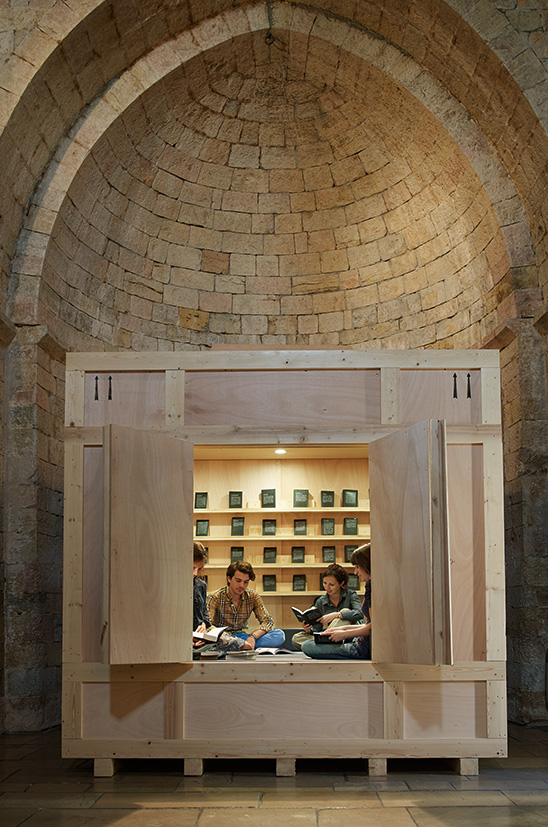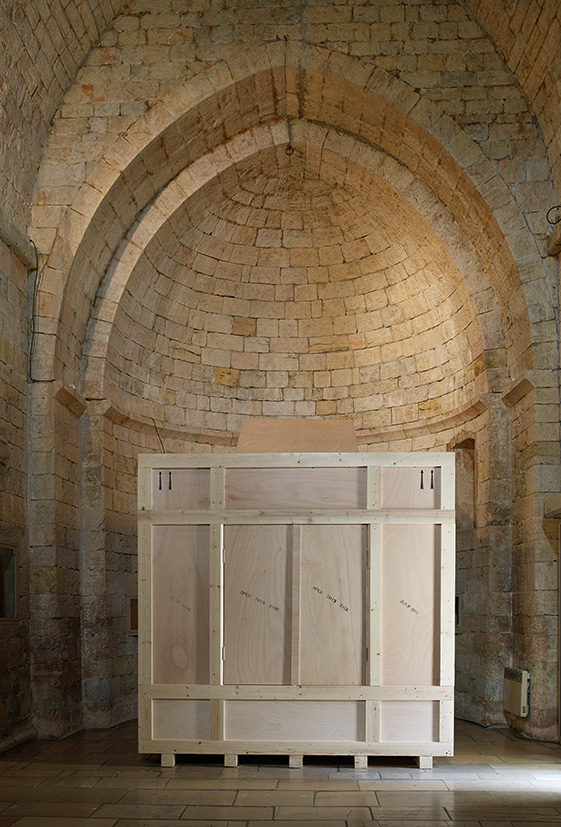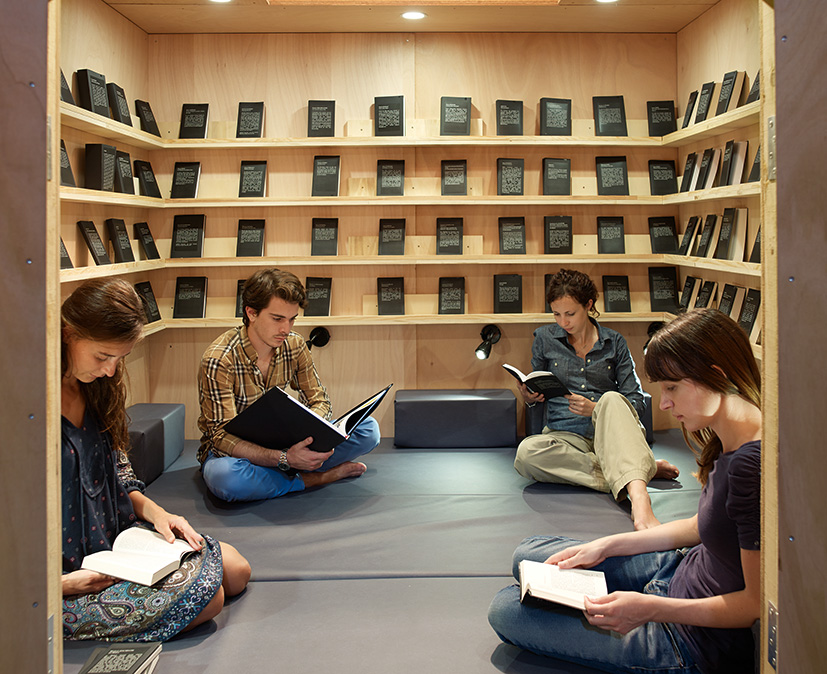Nize , 2014
ROOM OF FORBIDDEN BOOKS
Room where you can enter and read books that have been forbidden at some point in history in different countries.
Wood, light, 100 books. 300 x 300 x 300 cms.
In Pablo Picasso National Museum, Alicia Framis presented Room of Forbidden Books (2014), which takes on the aesthetics of a shipping crate to form a closed room with over a hundred books that have been forbidden at particular moments in time or in particular countries. Visitors are encouraged to take some time to read these forbidden works in the quiet and private confines of the room. By displaying such seemingly innocuous titles as Beatrix Potter’s The tale of Peter The Rabbit next to more outrightly challenging books like Karl Marx’s The Communist Manifesto, Framis underpins the problematic nature of the act of censoring. By encouraging the visitors acts of quiet ‘disobedience’, Framis brings to light the flexibility and resourcefulness of the mind’s ability to go beyond what is accepted and allowed, whilst showing the often absurd results of its actions in the inverse direction.



In Pablo Picasso National Museum, Alicia Framis presented Room of Forbidden Books (2014), which takes on the aesthetics of a shipping crate to form a closed room with over a hundred books that have been forbidden at particular moments in time or in particular countries. Visitors are encouraged to take some time to read these forbidden works in the quiet and private confines of the room. By displaying such seemingly innocuous titles as Beatrix Potter’s The tale of Peter The Rabbit next to more outrightly challenging books like Karl Marx’s The Communist Manifesto, Framis underpins the problematic nature of the act of censoring. By encouraging the visitors acts of quiet ‘disobedience’, Framis brings to light the flexibility and resourcefulness of the mind’s ability to go beyond what is accepted and allowed, whilst showing the often absurd results of its actions in the inverse direction.